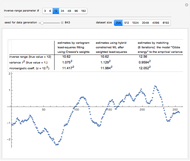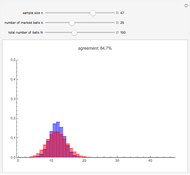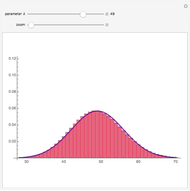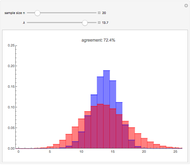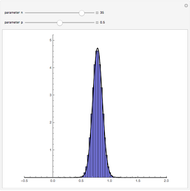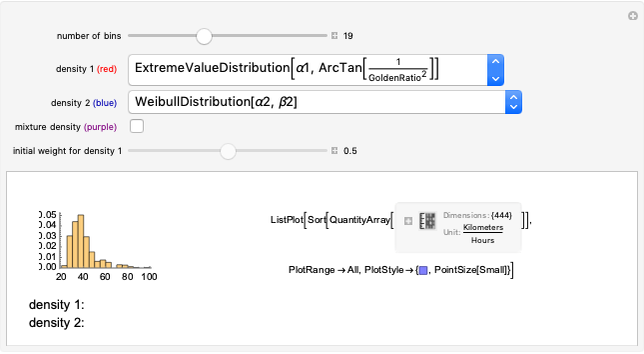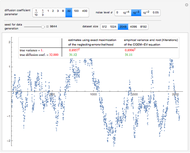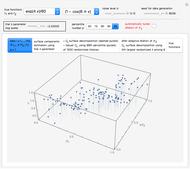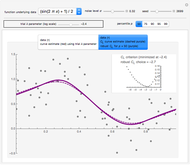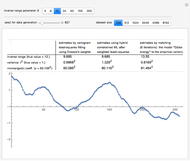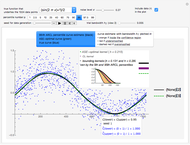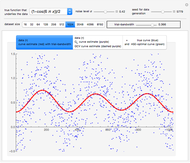Nonparametric Curve Estimation by Smoothing Splines: Unbiased-Risk-Estimate Selector and its Robust Version via Randomized Choices

Requires a Wolfram Notebook System
Interact on desktop, mobile and cloud with the free Wolfram Player or other Wolfram Language products.
This Demonstration considers a simple nonparametric regression problem: how to recover a function  of one variable, here over
of one variable, here over  , when only
, when only  couples (
couples ( ) are known for
) are known for  that satisfy the model
that satisfy the model  , where
, where  and the
and the  are independent, standard normal random variables. For simplicity, assume that the variance
are independent, standard normal random variables. For simplicity, assume that the variance  is also known.
is also known.
Contributed by: Didier A. Girard (September 2017)
(CNRS-LJK and Univ. Grenoble Alpes)
Open content licensed under CC BY-NC-SA
Snapshots
Details
References
[1] D. A. Girard, "Nonparametric Curve Estimation by Kernel Smoothers: Efficiency of Unbiased Risk Estimate and GCV Selectors," from the Wolfram Demonstrations Project—A Wolfram Web Resource. (Jan 9, 2013) demonstrations.wolfram.com/NonparametricCurveEstimationByKernelSmoothersEfficiencyOfUnb.
[2] jojosthegreat, "Implementation of Smoothing Splines Function," Mathematica Stack Exchange. (Sep 5, 2017) mathematica.stackexchange.com/questions/33206/implementation-of-smoothing-splines-function/33262.
[3] M. A. Lukas, F. R. de Hoog and R. S. Anderssen, "Practical Use of Robust GCV and Modified GCV for Spline Smoothing," Computational Statistics, 31(1), 2016 pp. 269–289. do:10.1007/s00180-015-0577-7.
[4] D. A. Girard, "Estimating the Accuracy of (Local) Cross-Validation via Randomised GCV Choices in Kernel or Smoothing Spline Regression," Journal of Nonparametric Statistics, 22(1), 2010 pp. 41–64. doi:10.1080/10485250903095820.
Permanent Citation




















